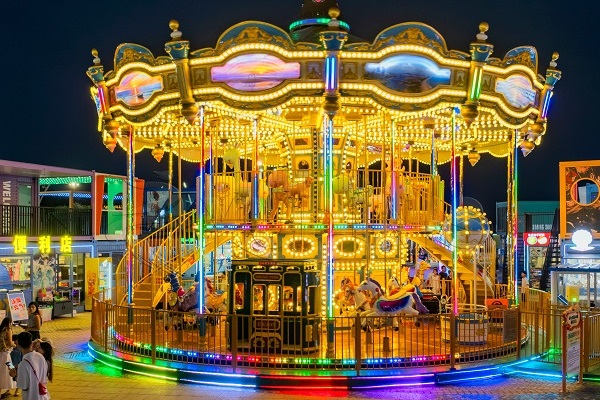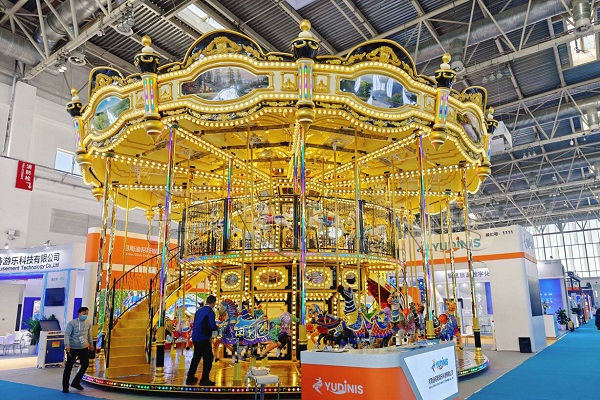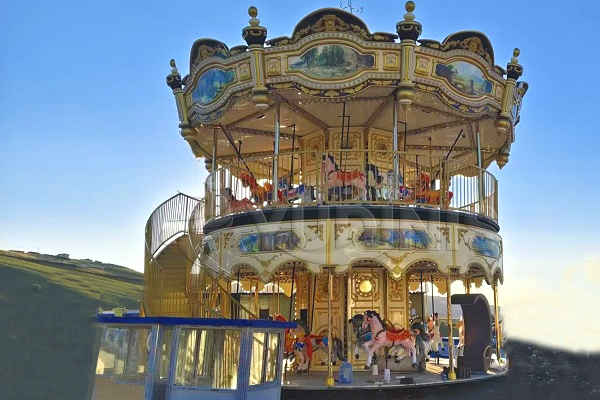As a professional manufacturer of amusement rides, Dinis knows that the charm of a double-decker carousel lies not only in its stunning appearance and ability to attract crowds, but also in the assurance of rider safety. With a ride of such size and complexity, routine safety inspections are essential to maintain smooth operation, prevent unexpected downtime, and build long-term trust with visitors. Below, we outline the key steps and considerations for conducting effective safety inspections for a double-decker carousel.

1. Daily Visual and Functional Checks
Operators should begin each day with a basic inspection before opening to the public. This includes checking for visible damage, loose bolts, unusual noises, or signs of wear on decorative parts and seats. Test runs should be conducted to ensure that the double-decker amusement carousel rotates smoothly and that all horses, seats, and platforms move as expected. Even minor irregularities can signal potential issues that require further investigation.
2. Structural Integrity Inspections
A double-decker carousel has a larger steel structure compared to a single-deck model. Inspectors must carefully examine the supporting columns, staircases, and upper deck flooring. Corrosion, cracks, or misalignments should be addressed immediately. Dinis recommends using anti-corrosion treatments and durable materials such as FRP for decorative components, which significantly extend the ride’s lifespan in outdoor or seaside environments.
3. Mechanical and Electrical Systems
The drive system and motor are the heart of the carousel. Routine checks should include lubrication of moving parts, monitoring for overheating, and ensuring the belt or chain transmission functions correctly. Electrical inspections involve testing the control panel, emergency stop systems, and lighting circuits. Any frayed wires or unstable connections must be repaired without delay to avoid hazards.

4. Safety Devices and Passenger Restraints
Although most carousel rides do not require heavy restraints, seat belts, handrails, and protective barriers must be firmly secured. For bi-level carousels, particular attention should be given to the stair railings and entry gates on the second level. Regular stress tests ensure that these safety features can withstand the pressure of frequent use.
5. Professional Periodic Testing
Beyond routine daily or weekly checks, Dinis Manufacturer strongly recommends professional safety testing at least once or twice per year. Certified inspectors can perform detailed load testing, motor performance evaluation, and electrical system diagnostics. These independent assessments not only guarantee compliance with international safety standards but also reassure customers and park operators alike.
6. Documentation and Training
Every inspection should be documented in detail, including identified issues, corrective actions, and dates of repair. A well-maintained logbook becomes a valuable tool for long-term maintenance planning. In addition, carousel operators and maintenance staff should receive regular training to stay updated on inspection methods, emergency procedures, and the correct handling of new technologies integrated into modern rides.

Conclusion
Routine safety inspections are the backbone of reliable carousel operation. At Dinis, we design and manufacture double-deck carousels with safety, durability, and user experience in mind. However, the responsibility for safe operation lies equally in regular inspection and maintenance. By following a strict inspection schedule—covering structure, mechanics, electrical systems, and safety devices—operators can ensure that every ride brings joy and excitement without risk.
With Dinis’s guidance and high-quality equipment, your double-decker carousel will remain a secure, iconic attraction for years to come.
Leave a Reply